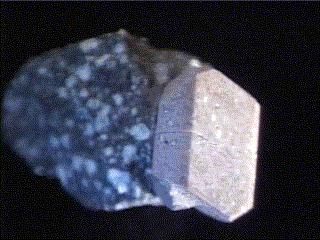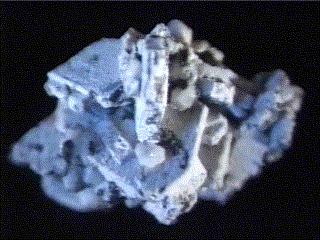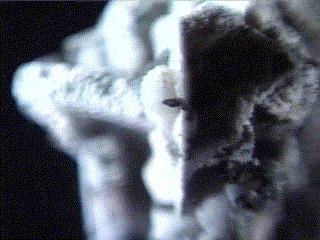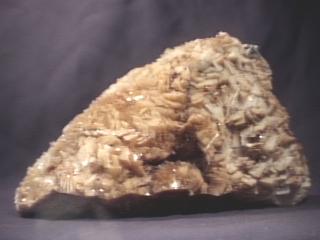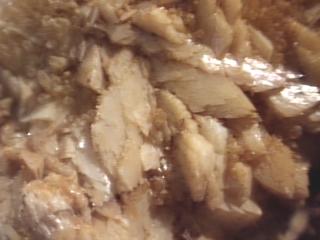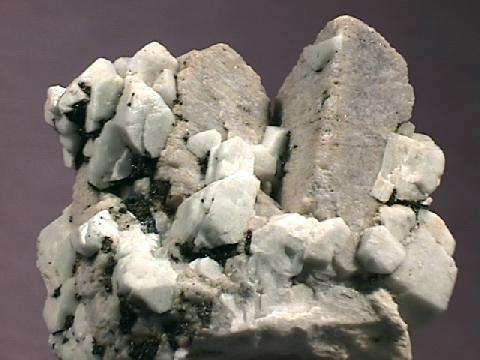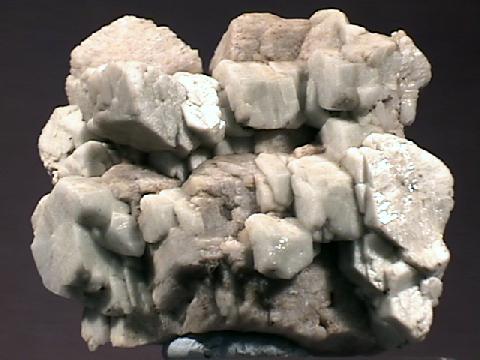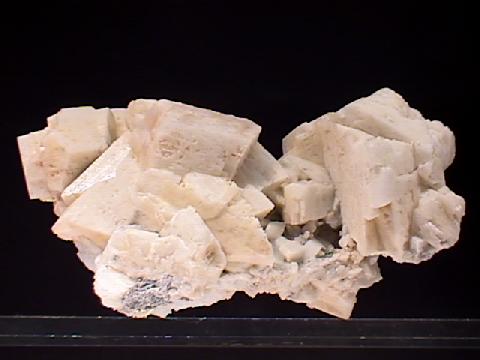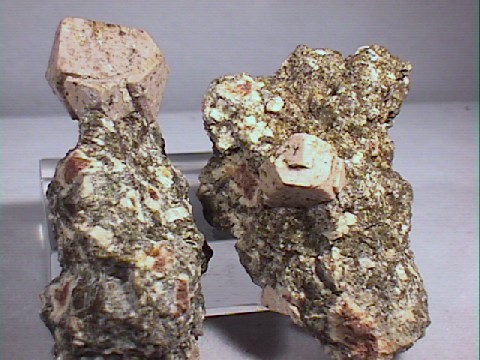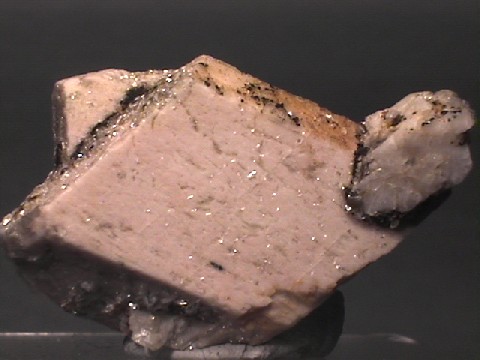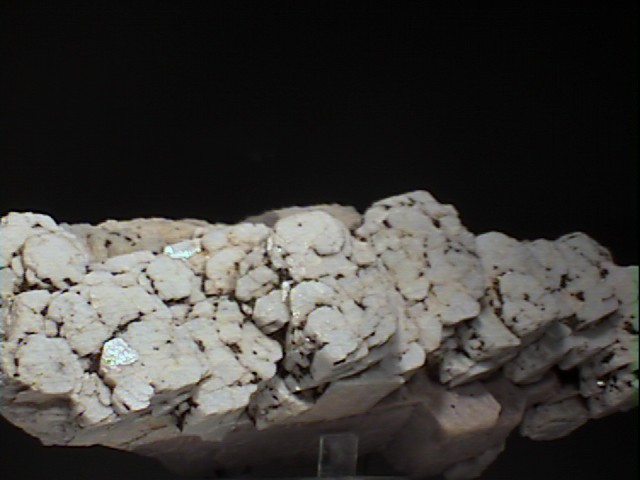 THE
MINERAL ORTHOCLASE
THE
MINERAL ORTHOCLASE
- Chemistry: KAlSi3O8, Potasium Aluminum Silicate.
- Class: Silicates
- Subclass: Tectosilicates
- Group: Feldspars
- Uses: mineral specimens and in the porcelain industry.
Specimens
Orthoclase is a polymorph of other minerals that share the same chemistry,
but have different crystal structures. If positive identification between
these minerals can not be made by field methods, then the specimen may
simply be referred to as a potassium feldspar or K-spar.
Plagioclase feldspars lack potassium, are light colored and are usually
striated. The other k-spar minerals are sanidine,
microcline
and
The differences between these minerals are minor in hand samples. Microcline tends to be deeper-colored and is the only one that can be, but is not always, a blue-green color (amazonite). Orthoclase does not show the lamellar twinning that is common in microcline and is occassionally present as striations on cleavage surfaces.
Sanidine and anorthoclase usually have a flattened crystal habit. Other than that, enviroment of formation is the only other hand sample clue to distinguish orthoclase from sanidine or anorthoclase. Orthoclase is the main k-spar of granites and syenites that cooled moderately quickly. Sanidine and anorthoclase are common constituents in extrusive igneous rocks such as rhyolites, where the rock cooled quickly. Optical properties and x-ray techniques are the only sure ways to distinguish orthoclase from sanidine, microcline and anorthoclase.
Orthoclase forms at intermediate temperatures between the stability fields of sanidine and microcline. At 400 degrees C or less, microcline is the stable structure for KAlSi3O8. Between approximately 500 degrees C and 900 degrees C, orthoclase is the stable structure. And above approximately 900 degrees C, sanidine is the stable structure. The difference between the structures is only in the randomness of the aluminum and silicon atoms. In microcline the ions are ordered, and this produces the lower symmetry of triclinic (yes, more order produces lower symmetry, see discussion in symmetry). With higher temperatures the positions of the aluminums and silicons become more disordered and produce the monoclinic symmetry of orthoclase and finally, sanidine.
Twinning is common in all feldspars and follow certain twin laws such as the Albite Law, the Pericline Law, the Carlsbad Law, the Manebach Law and the Baveno Law. In orthoclase, only the Carlsbad Law, the Manebach Law and the Baveno Law are seen. The Carlsbad Law twin produces what appears to be two intergrown crystals growing in opposite directions. Two different twin laws, the Manebach and Baveno laws, produce crystals with one prominant mirror plane and penetrant angles or notches into the crystal. Although twinning in general is common for orthoclase, single crystals showing a perfect twin are rare and are often collected by twin fanciers.
PHYSICAL CHARACTERISTICS:
- Color is off-white, yellow, or shades of red, orange to brown.
- Luster is vitreous to dull if weathered.
- Transparency crystals are usually opaque, may be translucent or rarely transparent.
- Crystal System is monoclinic; 2/m
- Crystal Habits include blocky or tabular crystals. Crystals have a nearly rectangular or square cross-section with slightly slanted dome and pinacoid terminations. Twinning is common. (see above). A psuedo-orthorhombic or psuedo-trigonal variety, found in alpine veins is called adularia, and forms more flattened tabular crystals.
- Cleavage is good in 2 directions forming nearly right angled prisms.
- Fracture is conchoidal or uneven
- Hardness is 6
- Specific Gravity is approximately 2.53 - 2.56 (average)
- Streak is white.
- Associated Minerals are quartz,
plagioclase
feldspars, micas,
garnets , tourmalines and topaz. - Other Characteristics: some crystals may show opalescence and are called moonstone.
- Notable Occurrences are many but these are a few of them: Salzburg, Austria; Cornwall, England and New York, Vermont, Maine and New Hampshire, USA.
- Best Field Indicators color, lack of striations, cleavage, twinning if present and occurrence.

